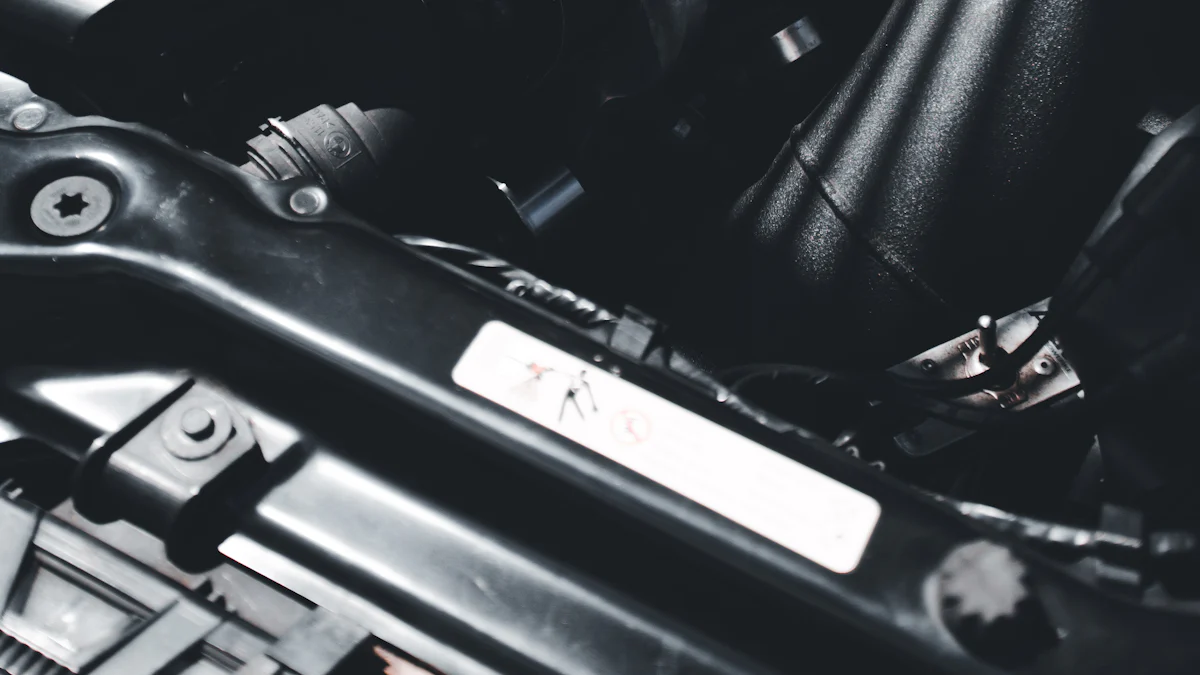
The Automatic Transmission Flexplate plays a vital role in your vehicle’s performance. It connects the engine to the transmission, ensuring smooth power transfer. However, when it becomes faulty, you might notice unusual noises, vibrations, or starting issues. These symptoms often indicate underlying problems like misalignment or cracks. Ignoring them can lead to severe damage. A damaged flexplate can also affect the Flywheel & Flexplate system, causing further complications. Additionally, a malfunctioning Harmonic Balancer might exacerbate these issues by failing to dampen engine vibrations effectively. Recognizing these signs early helps prevent costly repairs and ensures your vehicle runs smoothly.
Understanding the Automatic Transmission Flexplate

What is a Flexplate?
Definition and basic function
The Automatic Transmission Flexplate serves as a crucial component in vehicles with automatic transmissions. It connects the engine to the transmission, ensuring seamless power transfer. Unlike the heavier flywheel found in manual transmissions, the flexplate is thinner and lighter. This design allows it to flex as rotational speeds change around the torque converter. You will find it bolted to the crankshaft, acting as a bridge between the engine’s output and the input of the torque converter. This connection is vital for maintaining smooth and uninterrupted power delivery.
Role in automatic transmission
In an automatic transmission system, the Automatic Transmission Flexplate plays a pivotal role. It stores kinetic energy from the engine and delivers it smoothly to the transmission. This ensures that your vehicle operates efficiently without any interruptions. The flexplate’s ability to flex across its main axis helps accommodate changes in rotational speed, which is essential for the smooth operation of the transmission. By connecting the engine and transmission systems, the flexplate ensures that power flows seamlessly, allowing your vehicle to perform optimally.
Importance of a Healthy Flexplate
Impact on vehicle performance
A healthy Automatic Transmission Flexplate significantly impacts your vehicle’s performance. When functioning correctly, it ensures that power transfers smoothly from the engine to the transmission. This smooth transfer is crucial for maintaining the vehicle’s overall performance and efficiency. A damaged or faulty flexplate can lead to various issues, such as unusual noises, vibrations, and starting problems. These symptoms can affect the Flywheel & Flexplate system, leading to further complications if not addressed promptly.
Connection to the torque converter
The connection between the Automatic Transmission Flexplate and the torque converter is vital for your vehicle’s operation. The flexplate acts as a drive plate, linking the engine’s output to the torque converter’s input. This connection ensures that the engine’s power is effectively transmitted to the transmission. A malfunctioning flexplate can disrupt this connection, leading to performance issues. Additionally, a faulty Harmonic Balancer can exacerbate these problems by failing to dampen engine vibrations effectively. Ensuring that both the flexplate and harmonic balancer are in good condition is essential for maintaining your vehicle’s performance and longevity.
Symptoms of a Bad Flexplate

Unusual Noises
Clicking or knocking sounds
When your flexplate starts to fail, you might hear clicking or knocking sounds. These noises often occur when the vehicle idles or when you engage the gear. A cracked flexplate can produce a rhythmic clunking noise, which some drivers describe as sounding like a bad piston or rod bearing. If you notice these sounds, it’s crucial to investigate further. Ignoring them can lead to more severe issues.
Grinding noises during startup
Grinding noises during startup can also indicate a problem with the flexplate. This sound often resembles metal scraping against metal. It usually happens when the engine turns over. A damaged flexplate might not align properly with the starter, causing this grinding noise. Addressing this issue promptly can prevent further damage to your vehicle’s transmission system.
Vibrations
Excessive vibrations while driving
Excessive vibrations while driving can signal a bad flexplate. You might feel these vibrations through the steering wheel or the vehicle’s floor. They often become more noticeable at higher speeds. A flexplate that has lost its balance or has cracks can cause these vibrations. Ensuring the flexplate is in good condition helps maintain a smooth driving experience.
Shaking during acceleration
Shaking during acceleration is another symptom of a faulty flexplate. This shaking can feel like the vehicle is struggling to gain speed. It might occur when you press the accelerator pedal. A damaged flexplate can disrupt the power transfer from the engine to the transmission, leading to this shaking. Addressing this issue early can prevent further complications.
Starting Issues
Difficulty starting the engine
Difficulty starting the engine can result from a bad flexplate. The flexplate connects the engine to the starter motor. If it becomes misaligned or damaged, the engine might not start smoothly. You might hear a clicking sound when you turn the key, but the engine fails to start. Checking the flexplate can help identify the root cause of these starting issues.
Engine misfires or stalls
Engine misfires or stalls can also indicate a problem with the flexplate. A damaged flexplate can affect the timing and balance of the engine. This imbalance can lead to misfires or cause the engine to stall unexpectedly. Ensuring the flexplate is in good condition helps maintain the engine’s performance and reliability.
Diagnosing Flexplate Problems
Visual Inspection
Checking for visible cracks or damage
Start by visually inspecting the flexplate for any visible cracks or damage. Look closely at the surface for signs of wear or fractures. A flashlight can help illuminate hard-to-see areas. If you spot any irregularities, it might indicate a problem that needs addressing. Regular checks can prevent minor issues from escalating into major repairs.
Inspecting the flexplate’s alignment
Next, inspect the alignment of the flexplate. Misalignment can cause vibrations and unusual noises. Ensure that the flexplate sits correctly in its position. If it appears off-center or tilted, it may require adjustment. Proper alignment is crucial for smooth operation and longevity of the transmission system.
Listening for Noises
Using a stethoscope to pinpoint sounds
A mechanic’s stethoscope can be a valuable tool for diagnosing flexplate issues. Place the stethoscope near the engine and listen for unusual sounds. Focus on identifying clicking, knocking, or grinding noises. These sounds often indicate a problem with the flexplate. By pinpointing the source, you can better understand the issue at hand.
Identifying noise patterns
Pay attention to the patterns of the noises you hear. Do they occur at specific times, like during startup or acceleration? Recognizing these patterns can help you diagnose the problem more accurately. Consistent noise patterns often point to specific issues with the flexplate or related components.
Professional Diagnostic Tools
Utilizing OBD-II scanners
An OBD-II scanner can provide valuable insights into your vehicle’s performance. Connect the scanner to your car’s diagnostic port to retrieve error codes. These codes can indicate issues with the flexplate or other transmission components. Understanding these codes helps you address problems before they worsen.
Consulting with a mechanic
When in doubt, consult with a professional mechanic. Mechanics possess the expertise to diagnose flexplate issues accurately. They can perform thorough inspections and use advanced diagnostic tools. Their insights can guide you in making informed decisions about repairs or replacements. Seeking professional advice ensures that your vehicle remains in optimal condition.
Recognizing the symptoms of a bad flexplate early can save you from costly repairs. Unusual noises, vibrations, and starting issues are key indicators. Addressing these promptly ensures your vehicle’s longevity. Regular maintenance and timely diagnosis prevent severe damage. If symptoms persist, consult a professional mechanic. They possess the expertise to diagnose and repair flexplate issues accurately. By taking proactive measures, you maintain your vehicle’s performance and avoid major complications. Remember, a healthy flexplate is crucial for smooth power transfer and overall vehicle efficiency.
Post time: Nov-11-2024



